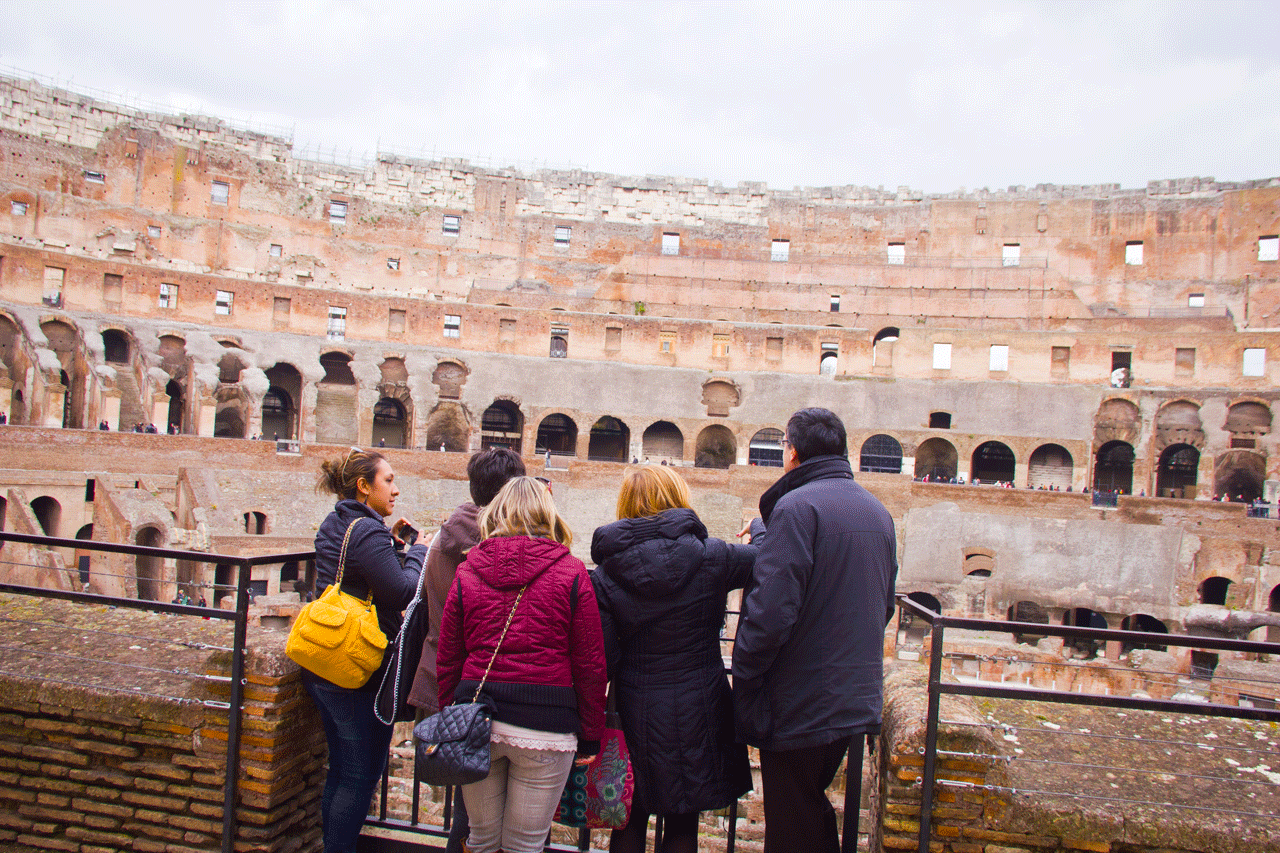Quite possibly the most famous structure in Rome, the Colosseum is a monumental and magnificent sight that every first-time visitor should experience. Officially known as the Flavian Amphitheater, the arena is an iconic symbol of Ancient Rome’s imperial power. However, the beautiful oval facade of tiered arches and engraved stonework hides an incredibly gruesome history of cruelty, ranging from wild animal fights and slaughter to executions and gladiatorial combats.
Built in just 10 years, the Colosseum was established by Emperor Vespasian of the Flavian dynasty as a grand entertainment arena for the people of Rome—essentially, its creation was a political move to gain popularity. The amphitheater was inaugurated in AD 80, with 100 days of games held to mark the occasion. It’s incredible to think that it has survived for 1,937 years.
As the largest amphitheater in Ancient Rome, the Colosseum could hold more than 50,000 spectators at a time, though they would have been crammed in like sardines. Seated in accordance with social hierarchy, slaves and women sat in the upper sections, the most privileged members of society enjoyed the best vantage points around the arena floor, and the emperor sat in the imperial box.
A Typical Day Of Games At The Colosseum
The Colosseum was actively used for four centuries for the purpose of providing free public entertainment, usually in the form of bloody games and battles. In its heyday, the arena games would begin with the pompa – a spectacular morning procession led by the emperor’s standard-bearers, followed by trumpeters and performers, fighters, nobles and priests, and carriages displaying effigies of the gods.
After the opening procession, the games would begin with the venatio. This first phase of the day’s entertainment was a hunt of wild animals, such as lions, tigers, elephants, giraffes, and bears. They were sometimes just paraded in front of the audience, but most of the time they were killed, either by fighting each other or being pitted against a trained hunter. It was not unusual for up to 10,000 animals to be slaughtered in a single day.
Between hunts, handsome stewards would hand out sweet treats such as cakes, pastries, sweetmeats, and wine to the spectators. Sometimes tokens for prizes like food and money would be tossed into the crowd. If it was particularly hot, sailors would draw a giant sheet of cloth (the velarium) over the entire arena roof.
The second stage of the day was ludi meridiani. During these midday games, barbarians, criminals, prisoners of war, and other condemned individuals were executed, often in ways inspired by mythology. Sometimes they were made to fight each other with swords or released into the arena to be killed by wild animals who would leap from the basement level through trap doors.
The main event of the games was gladiatorial combat. Forced to fight to the death, most gladiators were criminals, slaves, or prisoners of war. Unwilling contestants were punished with whips, fire, and rods. If a gladiator raised his left index finger to concede defeat, the emperor would decide his fate with the spectators’ help—a thumbs down led to a fatal blow from the opponent, and the victorious gladiator would collect his prizes.
The End Of The Colosseum Games
The last gladiator games at the Colosseum took place in the 6th century. This was due in part to the decline of the Roman Empire in the West, as well as changing public tastes. In the centuries that followed, the Colosseum was abandoned and suffered a great deal of damage from earthquakes and other natural events.
During that time, stones were quarried from the Colosseum, the hypogeum (underground level) was filled with rubble and dirt, vegetable gardens were planted, the arena level was used by various traders, plans were made and abandoned to transform the amphitheater into a wool factory, it became a popular site for botanists, and it was used as a temple to the sun.
In the 18th century, conservation of the Colosseum began, although almost more than half of the original structure and its decorative elements have succumbed to damage from natural disasters, vandalism, and neglect. Despite this, restoration efforts were introduced in the 1990s and the Colosseum remains one of the most fascinating, impressive, and popular tourist and archaeological attractions in Rome today.
Visiting The Colosseum
Our tours of the Colosseum in Rome are suitable for everyone, including solo travelers, couples, families, and groups. Whether you want to skip the crowds and enjoy an early morning tour, take a private or small-group tour, arrange a school trip or a fun day out for your kids, or explore the Colosseum at night, we have a range of tours to suit your specific preferences.
Our local guides are all fully licensed, fluent in English, and have a degree in either Art History or Archaeology, ensuring a fascinating and informative journey through the history and architecture of this historic Roman landmark. We look forward to welcoming you on one of our tours!


